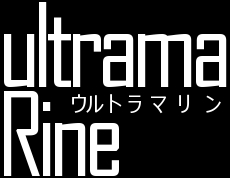"The Artist of the Beautiful" -「事実」と「原因」の描かれ方の相違について-
2009.01.23
Nathaniel Hawthorneの小説"The Artist of the
Beautiful"(1844)は、
ごく端的に言うならば、主人公Owen
Warlandの芸術家としての精神的成長を描いた物語である。
その成長が内包する高尚な意味・価値は、
物質的・実用的なものに固執する、俗なPeter
Hovenden、Annie Hovenden、Robert
Danforthの3人の登場人物との対比により、極めて鮮明に提示されている。
しかし当小説においては、そのOwenの精神的成長の、引き金となったものが明言されていない。描かれるのは主に、成長以前のOwenと、成長以後のOwenの姿である。
読者は、そのOwen像を比較することによって、そこに精神的成長を発見することは出来る。
従って、精神的成長の「事実」は極めて明快に読み取れるのではあるが、その「原因」は漠然としか浮かび上がってこない。
本論では、そのようなOwenの精神的成長の「事実」、「原因」それぞれの描かれ方の特徴について論じる。
初めに、Owenの精神的成長の「事実」の描かれ方についてである。
まず当小説において提示される、3つのOwen像について述べる。それぞれ時系列に従って、第1段階、第2段階、第3段階と呼称する。
第1段階におけるOwenの美的信念は、
"Owen
Warland felt the impulse to give external reality to his
ideas,"(458)
という記述によく表れている。
つまりこの段階では、自身の"bright
conceptions"(458)の中にある理想像を、現実に触れられるものにすることこそ、芸術家の本懐であるとOwenは認識している。
しかし一方で、この段階においてOwenは、
"To
persons whose pursuits are insulated from the common business of life―who are
either in advance of mankind , or apart from it―there often comes
a
sensation of moral cold, that makes the spirit shiver, as if it had
reached the frozen solitudes around the pole."(459)
という考えに対して
"growing
pale as
death"(459)
というような反応を示しており、自身の芸術家としての美の追求が世間から孤立することを極めて恐れている。
その為、自身の美の追求の理解者として、地上の存在であるAnnieを求めている。
第2段階におけるOwen像を示す記述は、
"Yet,
strong as he felt himself, he was incited to toil the more diligently, by an
anxiety lest death should surprise him in the midst of his
labors."(466)
である。ここでの"labors"は、第1段階におけるOwenが考えていた芸術家の本懐と変わらぬものである。
しかしこの第2段階においてOwenは、その美的追求の営みが世間から孤立すること(地上的な理解者を得られないこと)ではなく、
何より自身の死によって、途上で挫かれてしまうことを恐れている。
とにかく、命ある現世において、その仕事は果たされなければならないとOwenは考えている。
第3段階におけるOwenの芸術家としての信条は、
"He knew that the world, and Annie as the representative
of the world, whatever praise might be bestowed, could never say the fitting
word nor feel the fitting
sentiment which should be the perfect recompense
of an artist who, symbolizing a lofty moral by a material trifle―converting what
was earthly to spiritual gold―
had won the beautiful into his handiwork.
Not at this latest moment, was he to learn that the reward of all high
performance must be sought within itself, or
sought in vain."(472-473)
"And as for Owen Warland, he looked placidly at what
seemed the ruin of his life's labor, and which was yet no ruin. He had caught a
far other butterfly than this.
When the artist rose high enough to achieve
the Beautiful, the symbol by which he made it perceptible to mortal senses
became of little value in his eyes, while
his spirit possessed itself in
the enjoyment of the Reality. "(475)
という二箇所に最もよく表れている。
つまりこの第3段階においてOwenは、
自身の高尚な美の追求に対する報酬は世間に求めるものではなく、その追求の過程にこそ求めるべきものであること、
そして自身の追い続けた究極の美は、現実に知覚出来る機械仕掛けの蝶などには宿るべくもなく、更なる高次元に存在するものであったのだということを、悟っている。
それ故Owenは、Annieの軽蔑、つまり自分は世間からの報酬を得られなかったのだという現実に直面しても動じず、
また、
"Nature's
ideal butterfly was here realized in all its
perfection"(470)
と形容されるような、目に見える最上の美を備えた機械仕掛けの蝶を握り潰されても、平然としているのである。
以上3つの段階におけるOwen像が、小説内では提示される。
ところで、冒頭において、この小説はOwenの芸術家としての精神的成長を描いた物語であると述べた。
それはつまり、上記3つの段階を経過するOwen像の変化が、芸術家としての良き変化、即ち成長であると、解釈されるからである。
その解釈をもたらしているのは、語り手である。
例えば、
"Alas,
that the artist, whether in poetry, or whatever other material, may not content
himself with the inward enjoyment of the Beautiful, but must chase the
flitting mystery beyond the verge of his ethereal domain, and crush its
frail being in seizing it with a material grasp."(458)
"as irresistibly as
any of the poets or painters who have arrayed the world in a dimmer and fainter
beauty, imperfectly copied from the richness of their visions.
"(458)
という語り手の発言は、「理想的な美を現実世界で触れられるものにすることを主眼とする」という第1段階におけるOwenの芸術家としての姿勢を真っ向から否定するものである。 また、
"But,
rather, such incomplete designs of this life will be perfected nowhere. This so
frequent abortion of man's dearest projects must be taken as a proof, that the
deeds of earth, however etherealized by piety or genius, are without value,
except as exercises and manifestations of the spirit."(467)
という語り手の発言も、第2段階における「とにかく命ある現世において美の追求を成し遂げる」ことを切望するOwenを、ほとんど意味のないものとして退けるものである。
つまり、第1段階、第2段階におけるOwenの芸術家としての姿勢を語り手がその場で否定し、
且つ理想の芸術家像(あくまで当小説における)を示唆しておくことによって、
読者は第3段階におけるOwenこそが最良のOwenであるという解釈に至るのである。
よってこの小説は、Owenの芸術家としての精神的成長を描いた物語となる。
以上が、Owenの精神的成長の「事実」の描かれ方である。
次に、Owenの精神的成長の「原因」の描かれ方についてである。
前述したように、Owenの精神的成長の「事実」は、3段階のOwen像の提示と、語り手による誘導によって描き出されている。
では精神的成長の「原因」はどこに描かれるべきかと言えば当然、3つのOwen像同士の間、
つまり第1段階と第2段階との間、そして第2段階と第3段階の間である。
しかしそこに明快な「原因」の詳細は見当たらないのである。
例えば第1段階と第2段階との間においては、「春の午後に蝶を見た」ことが大きな転機になっているように一見思える。
しかし、
"but
of which the shrewdest could not explain or conjecture the operation on Owen
Warland's mind."(461)
"Owen, who had drank freely"(462)
"In Owen
Warland's case the judgment of his towns-people may have been correct. Perhaps
he was
mad."(462)
等といった記述により、Owenは言わば「信頼できない」人物となり、常識の範疇を超えた受容スタイルによって「春の午後の蝶」を捉えた可能性が高まるのである。
従って、第1段階から第2段階にかけてのOwen像の変化の「原因」は、読者にとって掴みかねるものとなる。
更に第2段階と第3段階との間において、つまり最も重要な成長が生じたはずの領域においては、
"not
recorded."(466)
"Pass we over a long space of intense thought, yearning
effort, minute toil, and wasting anxiety, succeeded by an instant of solitary
triumph: let all this be
imagined"(468)
などと、「原因」を探る手がかりさえ与えられないのである。
こうして、当小説におけるOwenの精神的成長の「原因」は、極めて漠然としたものになっているのである。
以上、当小説におけるOwenの精神的成長の「事実」と「原因」の描かれ方の特徴について見てきた。
概して感じられるのは、Hawthorneの語りのバランスの霊妙さである。
ともあれHawthorneは、Owenの精神的成長の「事実」と「原因」の表現にコントラストを与えることにより、
この小説を教訓的(良き「事実」の提示)なものにすると同時に、
その教訓の捉え方に幅を持たせる(それを生む「原因」の曖昧さ)ことにも成功していると言えるのではないか。
